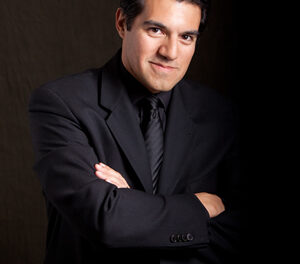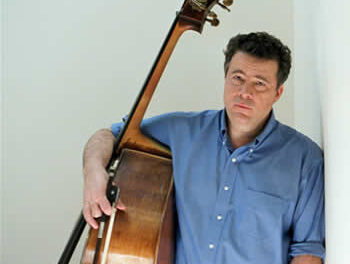Rumor has it that Carol Woods‘ concert series is competitive. So competitive that local classical artists are rivaling for available slots well in advance. Which means that Chapel Hill audiences can count on regular, free, quality performances by musicians living in and around their community. Lucky ducks.
This program featured violist Samuel Gold and collaborative pianist James Rice. Gold introduced the program as being, “for better or worse, somewhat wintery.” The description was an apt portrayal for the shifts in both works between warmth and chill, and cozy contemplativeness and brash bluster. Bach and Schubert always make a pleasant pairing, since the kinship and contrast between the two composers are balanced nicely. While no explanation was forthcoming of the fact that original marketing materials included a somewhat different program with a different pianist, the program performed was more than strong enough to make the issue irrelevant.
Gold approached the first work on the program, Bach’s Violin Sonata No. 1 in G minor, S. 1001 – transcribed down to C minor for viola – with a cerebral restraint that allowed the composer’s sheer mathematical brilliance to shine through. Many musicians approach this particular piece with a certain level of restlessness and showmanship. Gold’s interpretation could not have been more different. His delicate, calm, and methodical phrasing emulated and enhanced the introspective musings of Bach’s compositional style. The first movement, meditative and extraordinarily calming, gave way to a carefully constructed fugue. Gold highlighted many distinct subtleties in this movement without getting in his own way. The third movement, a Siciliana, gave a hint of Gold’s warmer tone that would late dominate the Schubert, while the final Presto acted almost as a release from the carefully mediated phrases of the opening movements.
Rice joined Gold onstage for the second half of the program. While this reviewer has seen other pianists struggle with the acoustic combination of that particular piano in that particular space, Rice never appeared to have an issue. All the more impressive since solo violas are notoriously difficult to balance – possibly even more so when playing Romantic literature. Rice never drowned out his partner and, better yet, still managed to achieve a level of expressivity that timid pianists, afraid of overpowering their soloists, often avoid. Rice tastefully chose moments to allow his melodic lines to shimmer up to the surface of the texture and then tastefully submerge back to a supportive role. The balance was consistently excellent, and yet Rice did not sacrifice tone or clarity of touch.
The second half of the program consisted of Franz Schubert’s Arpeggione Sonata, D.821. This piece was originally written for a now essentially extinct stringed instrument. Considering that the arpeggione was fretted and had six strings, the work translates surprisingly well to viola. In this context, it came across as possibly more idiomatic than the Bach sonata.
Gold shifted from Baroque to Romantic styles quite adeptly, bringing out the range of emotions ranging from passionate to capricious. Gold and Rice both approached the piece with a like-minded unity of interpretation and style. Both artists used thoughtful variations of timbre in creative ways throughout the piece, and each performer displayed a delicate patience with the restless rising and falling of dynamic levels, especially in the second movement. The last movement – the Allegretto – alternatingly insistent and dancelike, brought the program to a lovely close.
This was a concert that absolutely flew by. While it clocked in at just under an hour, it left the listener hungry for more. More, fortunately, is just what Carol Woods’ concert series promises. Check out our calendar for details.












